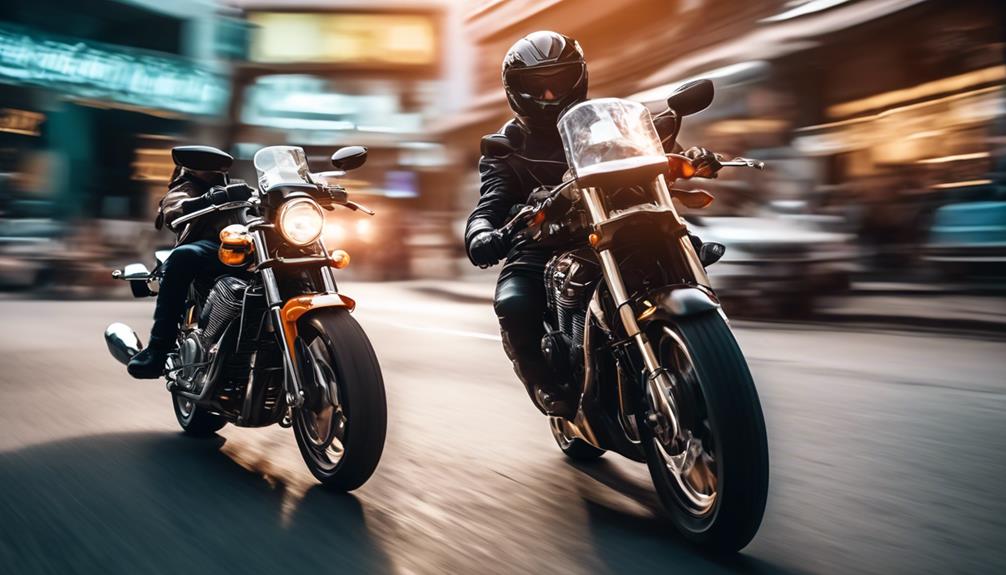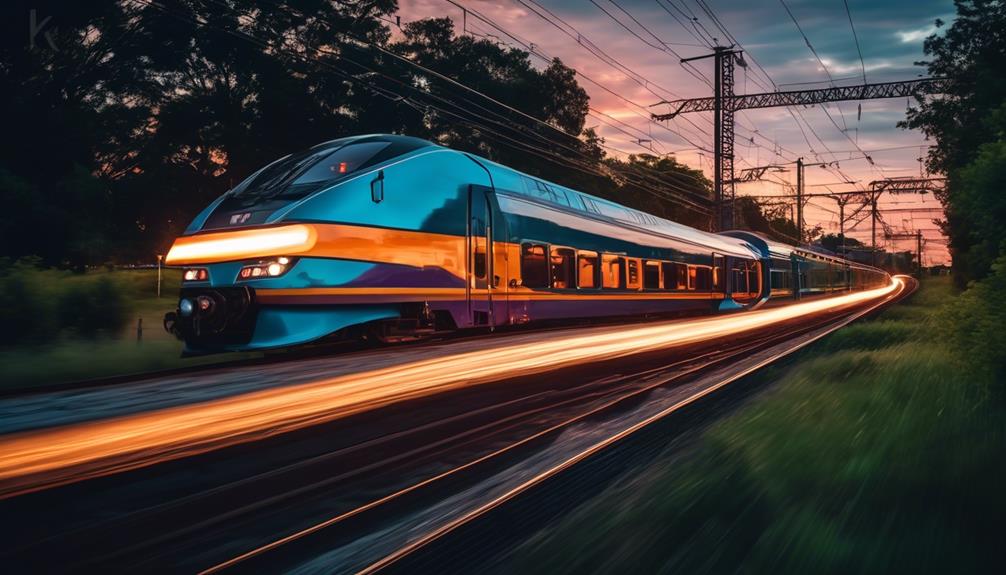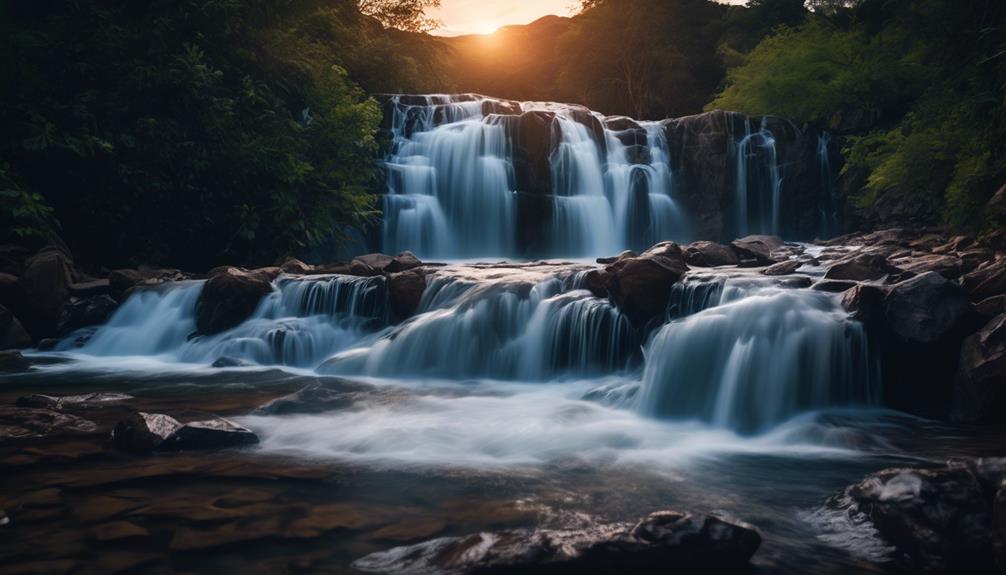Please note this post may contain affiliate links picked by me (Jay) that I have deemed may be of interest or relevant to you the reader of this.
These links do not affect the cost of the thing if you decide to purchase but i may get a little money if you choose to purchase.
For more information on my affiliate link policy click here.
Mastering the art of shutter speed is like unlocking a hidden treasure chest of photography skills. It's the secret key that allows you to freeze action, capture motion, and create stunning creative effects.
Whether you're a beginner or an experienced photographer, understanding and harnessing the power of shutter speed will take your photos to the next level. But how exactly does it work? How can you use it to achieve perfect exposures?
In this discussion, we'll explore the ins and outs of shutter speed, diving into the fascinating world of freeze frames, blurry backgrounds, and everything in between. Get ready to elevate your photography game and discover the limitless possibilities that await you.
Key Takeaways
- Shutter speed determines how motion is captured in a photograph.
- Fast shutter speeds freeze action and eliminate motion blur in sports photography.
- Slow shutter speeds can convey a sense of movement and create vibrant images in low light situations.
- Long exposure allows for unique and mesmerizing effects, such as light trails and star trails.
Understanding Shutter Speed Basics
Understanding the basics of shutter speed is essential for any photographer looking to take their skills to the next level. When it comes to low light photography, choosing the right shutter speed is crucial. Shutter speed refers to the length of time the camera's shutter remains open, allowing light to enter and hit the camera sensor. It determines how motion is captured in a photograph and plays a vital role in achieving the desired exposure.
In low light situations, such as shooting at dusk or in dimly lit interiors, a slower shutter speed is often required to allow more light to reach the sensor. However, be mindful that using a slow shutter speed can result in motion blur if the subject or the camera moves during the exposure. To counteract this, you can use a tripod or stabilize your camera to ensure sharpness. Alternatively, you can increase the ISO to make the sensor more sensitive to light, but this might introduce noise in the image.
On the other hand, if you're photographing a moving subject in low light, a faster shutter speed is necessary to freeze the action. This will prevent any motion blur and ensure a sharp image. Experimenting with different shutter speeds will allow you to capture unique and creative shots, whether it's freezing a subject mid-air or intentionally blurring motion for artistic effect.
Freeze Action With Fast Shutter Speed
To capture fast-moving subjects with crystal-clear detail, a fast shutter speed is essential. Whether you're shooting action-packed moments of a thrilling soccer match or trying to capture the grace and precision of a ballet dancer mid-leap, freezing the action is crucial in action and sports photography. With a fast shutter speed, you can freeze a moment in time, capturing every detail and movement with stunning precision.
When it comes to freezing action, the faster the shutter speed, the better. A shutter speed of 1/1000th of a second or faster is ideal for most action photography. This high-speed setting allows you to capture even the smallest details of a fast-moving subject. Whether it's a speeding race car or a basketball player mid-air, a fast shutter speed will ensure that every moment is captured with sharpness and clarity.
Using a fast shutter speed not only freezes the action but also helps eliminate motion blur. When shooting sports or any fast-paced activity, there's always a risk of capturing blurry images due to the subject's movement. However, by using a fast shutter speed, you can eliminate this issue and capture crisp, sharp images.
To achieve the best results, it's important to consider the lighting conditions. In low-light situations, you may need to increase your ISO or open up your aperture to allow more light into the camera. With proper lighting and a fast shutter speed, you'll be able to freeze the action and create stunning images that capture the excitement and energy of the moment.
Capture Motion With Slow Shutter Speed
Now, let's explore the captivating world of capturing motion with a slow shutter speed. When it comes to photography, there's something truly magical about freezing a moment in time. But what if we want to convey the sense of movement, the energy, and the dynamism in our photos? This is where slow shutter speed comes into play.
Low light photography is one scenario where slow shutter speed can work wonders. By using a slower shutter speed, we allow more light to enter the camera sensor, resulting in brighter and more vibrant images. This is especially useful when shooting in dimly lit environments, such as indoor events or night scenes.
One technique that complements slow shutter speed is the panning technique. This involves tracking a moving subject with your camera while using a slow shutter speed. By following the subject's movement, you can create a sense of motion blur in the background, while keeping the subject relatively sharp. The key to mastering this technique is to match the speed of your camera movement with that of the subject. With practice, you can capture stunning images that convey the dynamic energy of the scene.
Another advantage of using slow shutter speed is the ability to create long exposure shots. This technique is often used to capture the beauty of flowing water or streaking lights. By leaving the shutter open for an extended period, the camera records the movement over time, resulting in smooth and ethereal images.
Creative Effects With Long Exposure
With long exposure, you can unleash your creativity and capture breathtaking images that showcase the beauty of movement and light. It's like painting with light, allowing you to create unique and mesmerizing effects that are impossible to achieve with a quick shutter speed. One of the most popular techniques in long exposure photography is capturing light trails.
Light trails are created when a moving light source, such as car headlights or city lights, is captured over an extended period of time. This technique can transform an ordinary street into a vibrant and dynamic scene. By setting your camera to a slow shutter speed and using a tripod to keep it steady, you can capture the trails of light as they weave through the frame. The result is a stunning image that showcases the energy and movement of the city.
To achieve different effects with light trails, you can experiment with different shutter speeds and angles. A longer shutter speed will create longer light trails, while a shorter shutter speed will create shorter trails. You can also try different angles and perspectives to add depth and interest to your composition.
To help you understand the creative possibilities of long exposure photography, here is a table showcasing some popular techniques and the effects they produce:
| Technique | Effect |
|---|---|
| Light Trails | Captures the movement of light sources, creates dynamic and vibrant images |
| Motion Blur | Blurs moving subjects, adds a sense of motion and energy to the image |
| Star Trails | Captures the movement of stars over a long period of time, creates mesmerizing patterns |
| Light Painting | Uses a flashlight or other light source to "paint" objects or scenes with light |
With long exposure, the possibilities are endless. It allows you to push the boundaries of traditional photography and create images that are truly unique and innovative. So grab your tripod, set your camera to a slow shutter speed, and let your creativity soar as you capture the magic of movement and light.
Mastering Shutter Speed for Perfect Exposures
Mastering shutter speed is the key to achieving perfect exposures and taking your photography skills to the next level. When it comes to capturing images in low light, understanding the right shutter speed techniques is crucial. By mastering these techniques, you can create stunning photographs even in challenging lighting conditions.
In low light photography, a slower shutter speed is often necessary to allow more light into the camera. However, using a slow shutter speed can result in blurry images if not handled properly. To overcome this, there are a few techniques you can employ. One technique is to use a tripod or stabilize your camera to minimize camera shake. Another technique is to increase your ISO to compensate for the lack of light, but be cautious as this may introduce noise into your images.
Balancing shutter speed and aperture is essential for achieving optimal exposure. The shutter speed determines how long the camera's sensor is exposed to light, while the aperture controls the amount of light entering the camera. By adjusting these settings, you can control the exposure of your image. For example, if you want to freeze a moving subject, you'd choose a faster shutter speed. On the other hand, if you want to create motion blur, a slower shutter speed is preferred.
Mastering shutter speed is all about experimentation and practice. Take the time to familiarize yourself with your camera's settings and try different combinations of shutter speed and aperture. Don't be afraid to push the boundaries and explore new techniques. With time and practice, you'll gain the confidence to capture perfectly exposed images in any lighting condition.
Frequently Asked Questions
How Can I Determine the Optimal Shutter Speed for a Specific Subject or Scene?
Determining the optimal shutter speed for a specific subject or scene is key to capturing stunning photographs. By experimenting with different settings, I've discovered creative shutter speed techniques that add depth and excitement to my images.
It's all about finding the perfect balance between freezing motion and capturing motion blur. Whether it's a fast shutter speed for action shots or a slower speed for long exposure, understanding the impact of shutter speed on your photos will take your photography skills to new heights.
What Are the Best Techniques for Avoiding Camera Shake When Using Slow Shutter Speeds?
Avoiding camera shake when using slow shutter speeds is crucial for capturing sharp and stunning images.
Tripod stability is key in keeping your camera steady, providing a solid foundation for your shots.
Additionally, utilizing image stabilization techniques, such as optical or in-body stabilization, can further minimize camera shake.
Can I Achieve Motion Blur Without Using a Slow Shutter Speed?
Yes, it's possible to achieve motion blur without using a slow shutter speed. Creative alternatives like panning can help capture the essence of movement while keeping the subject sharp. By experimenting with different photography genres, we can explore the artistic possibilities of motion blur.
Whether it's capturing the speed of a race car or the graceful dance of a ballerina, motion blur adds a dynamic and visually appealing element to our photographs. It's an exciting way to push the boundaries of traditional photography techniques.
Are There Any Specific Camera Settings That I Should Adjust When Using Long Exposure Photography?
Understanding the relationship between aperture and shutter speed is crucial when it comes to long exposure photography. By adjusting these camera settings, you can create stunning light trails and capture the essence of movement.
It's all about finding the perfect balance between a slow shutter speed and the right aperture setting. Don't be afraid to experiment and push the boundaries of your creativity.
With the right camera settings, you can achieve incredible results and take your photography skills to new heights.
How Can I Capture Fast-Moving Subjects With a Slow Shutter Speed Without Losing Sharpness?
To capture fast-moving subjects with a slow shutter speed without losing sharpness, I increase the ISO and use the panning technique.
By boosting the ISO, I can increase the sensor's sensitivity to light, allowing me to use a slower shutter speed without sacrificing image quality.
Panning involves tracking the subject's movement with the camera while snapping the shot, resulting in a sharp subject against a blurred background, creating a sense of motion and excitement in the photograph.
It's a game-changer for capturing dynamic action shots!
Conclusion
So, there you have it, shutter speed mastery is the key to unlocking your photography potential!
Freeze the action, capture the motion, and create mesmerizing long exposure effects.
With a little practice and experimentation, you'll be able to achieve perfect exposures every time.
So, grab your camera, embrace the beauty of alliteration, and let your photography skills soar to new heights.
Happy shooting!


